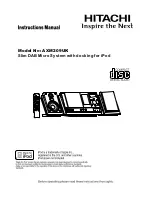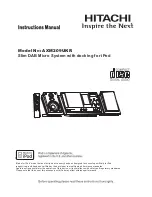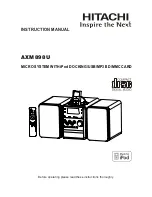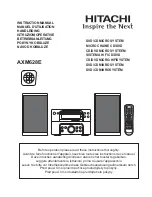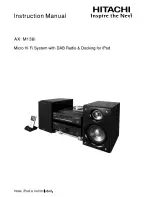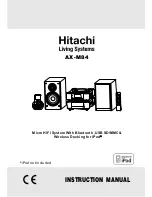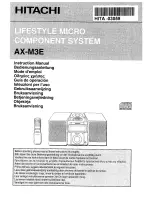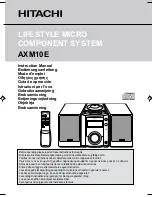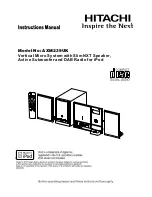
Since the setting of the fader for standard level through the channel is at 5dB
loss, it is desirable that this amplifier should have 5dB of voltage gain. The Amplifier
E serves this purpose. Its input impedance is 50k
Ω
and its output is designed to
feed a pan pot and echo level control in parallel. Its circuit is described in 12.6
3.5.7 Pan-pot
This consists of two reverse connected potentiometers each having a total
resistance of 11k
Ω
with the inputs in parallel. If the outputs from the sliders are fed
to a stereo channel, the control may be used to pan the signal full left, full right or to
any of 19 intermediate positions. The extreme positions provide the means of
switching the signal to either of two output channels that are not a stereo pair.
3.5.8 Output Circuits
Each pan-pot slider is connected to the input of an Amplifier B which acts as
a voltage to current converter. This amplifier is described in 12.4.
The outputs of the two Amplifiers B in one channel are connected to the
sliders of the output selector, a 2-pole, 11-way stud switch. The extreme
anticlockwise position is “off”. For a current source, the normal connection for “off”
is a short circuit. If however this stud were connected to the 0V line, since the
switch is of the shorting type, the transition from the first to second stud would put a
short circuit on the input of the amplifier connected to the second stud. As this is a
virtual earth input amplifier, it generates a click under these conditions. This is
avoided by using a 3.3k
Ω
resistor on the first stud and this provides a reasonably
low load for the Amplifier B in the off position.
The remaining ten positions of the channel selectors are connected to bus
lines. In each case the channel to which signal is fed when the pan pot is in its
anticlockwise position is connected to an A bus line and the other channel
(clockwise pan pot) to a B bus line. The A and B bus lines feed to the left and right
channels of the subsequent cassette. Provision is made for two Group Cassettes
(G1A, G1B, G2A and G2B), for four Main Cassettes (Main 1A, 1B to 4A, 4B) and for
eight channels (Monitor 1A to 4B) to Track Monitor Cassettes. If a mixer has less
than the maximum numbers of Group, Main and Track Monitor cassettes, some of
these bus lines will not be used.
The purpose of the monitor bus lines is to allow a recording to be made
without added echo but to be able to listen to it on the monitor speakers with added
echo. In this case, the cassette selector of the microphone channel used for echo
return is switched to the desired monitor channel where it is added to the direct
signal. (See 6.5.2)
Although with 8-track and simultaneous auxiliary stereo working there are 10
monitor channels in use, it is thought that the 8 monitor inject channels provided are
quite adequate. In this set up lines 1A, 1B, 2A and 2B, are routed to the extreme
left hand Track Monitor Cassette, lines 3A and 3B to the upper channels of the
second Track Monitor Cassette and lines 4A and 4B to the upper channels of the
Track Monitor Cassette at the right hand end of the Mixer, this being the one used
for the auxiliary stereo channels.







































